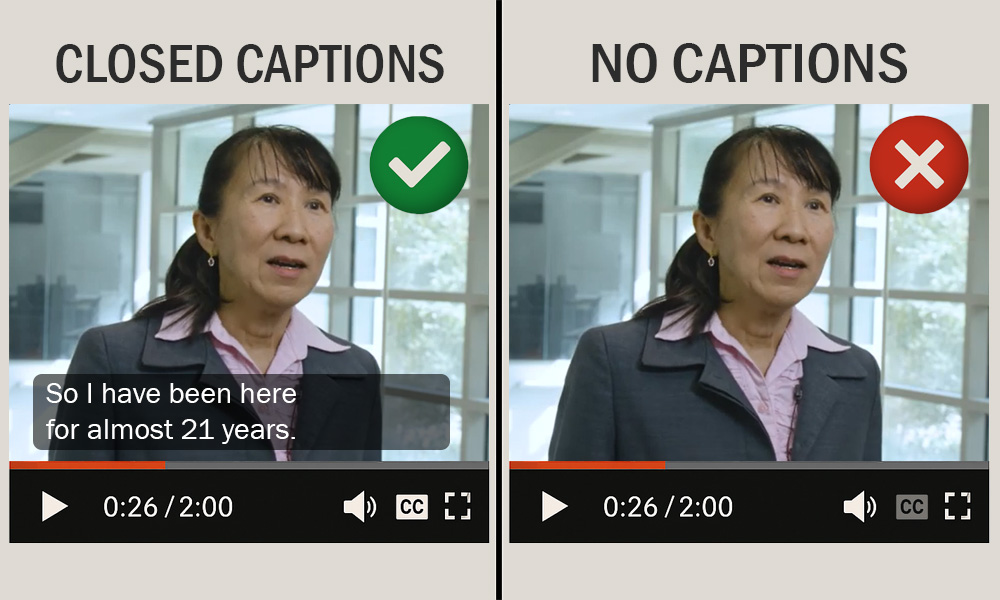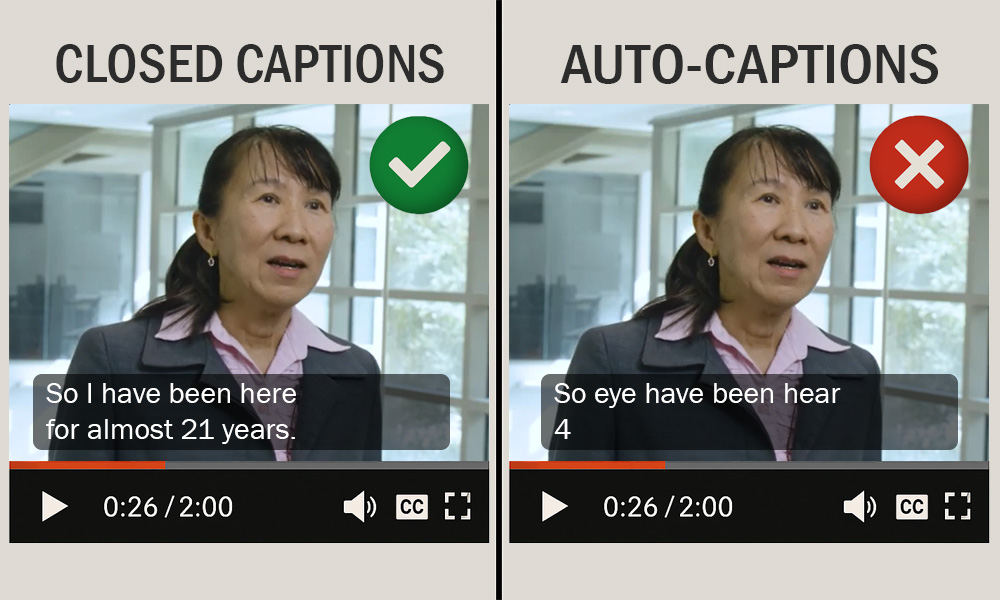Audio and Video
Add transcripts or captions so all students can follow along.
Impact
Transcripts and closed captions are assistive technology for people who are Deaf or hard of hearing. Without them, videos and audio recordings are essentially silent.

That means they miss out on:
- What people are saying
- Important sounds (like a door slamming or music playing)
- The full meaning and emotion of the content
Even if there are captions, they may not be helpful. For example, auto-generated captions (auto-captions) often misunderstand context:
- provide the wrong word
- provide the wrong spelling for a word

Did you know? You can tell the captions are auto-generated in YouTube. Manually created or modified closed captions display all the words at once. Auto-generated captions display one word at a time.
Transcripts and closed captions are not just helpful for people with hearing loss. They benefit many others, too! For example:
- People in noisy places (such as gyms or airports) can still follow along
- People in quiet places (such as libraries or offices) can watch without sound
- Language learners can read along and understand better
- People with learning or cognitive disabilities can process information more easily
- Anyone who prefers reading over listening can quickly scan the content
- Search engines can find and index your video more effectively, making it easier to discover
- Viewers can jump to specific parts of a video using the text in transcripts
How to: Audio content
If you have audio in your class lectures or online courses, it should be transcribed.
How to: Video content
If you have video in your class lectures or online courses, it should be closed captioned.
Best practices
Frequently asked questions
Additional guidance
You can learn more about providing accessible audio and video content with the following accessibility guides:



